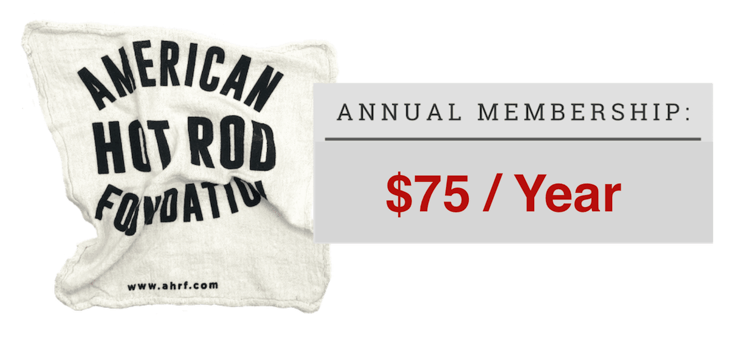Born in Los Angeles, Lou Senter got his automotive start in a slightly unusual way by entering a soapbox race at the famed Gilmore Stadium in 1934. Using scrap, Lou built himself a nifty midget-style soapbox complete with flame job. He then pushed his brother the full quarter mile dirt track to win the race. It was an auspicious start to an amazing career.
Lou quickly went full-size and with brothers Harold and Sid assembled a stripped-down T Roadster with a Rajo-headed Model A engine. He became so adept at mechanics his father encouraged him to set up a shop in the family’s two-car garage. Meanwhile, he got a part-time job at The Alexander Company assembling tether cars. Alexander also produced an OHV conversion for the 21-stud Ford V-8 and Lou would later try them out on his lakes racing ’32 Roadster hitting 112 mph. Like so many contemporaries, the rod was the test bed and the lake bed the dyno.
Lou appears to be one of those kids that just worked because upon graduation from Fremont High in 1939 he got a job with Byron Jackson Oil Tool Company but moonlighted for Jack Peters’ short-lived Throttle magazine. He got his first by-line on page 9 of the March 1941 issue writing “Speedway Highlights”—it became a regular column until Throttle’s last issue. His brother Sid also wrote for Throttle. At the time, Lou raced a V8-60-powered midget with some success.
After four years in the U.S. Navy, Lou jumped right back into racing, built a midget and accepted $500 to appear at the first event at the new Coliseum board track. Unfortunately, or perhaps fortunately, his hired shoe, Marty Kline, got sick and Lou had to drive. Late arriving, Lou started at the back but fought his way to finish sixth, taking home a reported $2,500 purse saying to Paul Smith in his book Merchants of Speed, “It felt so darn good. Racing on the board track just came natural to me.”
Meanwhile, Lou had gone to work for Eddie Meyer but his plan was to open his own business with his brother, which he did after just 8 months. To keep the doors open, he contracted to build Meyer’s nerf bars and that got Senter Engineering, newly located on Jefferson Boulevard, close to Edelbrock, into business. Lou’s next big break came when Max Rose looking for a way to hold racing tires onto midget wheels approached him. Lou developed a bead-lock system bolted to the outside of the rim.
All too quickly, Senter Engineering was becoming a full fledged speed shop—Lou having realized that there was money to be made selling not only used but also new speed equipment. He also made side money street racing but his world was about to explode. Enter Jack Andrews who, like Lou, was a machinist with a lot of ideas. The pair formed Ansen Automotive Engineering, an amalgam of Andrews and Senter, and opened a new speed shop in a block shaped building at 6317 South Normandie, Los Angeles. They displayed at the very first HOT ROD Show at the Los Angeles Armory, January 1948, and their first ad appeared on page 34 of the second edition of HOT ROD Magazine, February 1948, saying: We Build Them! HOT RODS, Motors, Chassis, Machining, Distributors, Iskenderian Track Cams. They were also one of the first speed shops to enter the lucrative mail-order catalog business.
One of Lou’s first successful products had been big-bore gaskets for the flattie but, almost by chance, he stumbled upon a need and a solution for Ford’s inadequate mechanical brakes. Lou developed a do-it-yourself kit. Realizing the potential, Ansen went on to develop numerous kits that we take for granted nowadays, things like floor-shift kits, aluminized fire suits, bell housings and later, complete sprint car kits. Lou even got into the promotion business when he partnered with Lou Baney and leased a runway at Saugus for $300 a month—it was the first track to give out cash prizes, actually $25 war bonds. The entrance charge was 99 cents so that they didn’t have to pay taxes on a dollar admission. Typically, they got a couple hundred races cars and around 1,000 spectators.
Lou always appeared to be at the forefront of the industry and became one of the founders of what is now the Specialty Equipment Market Association, (SEMA), in 1958. Back then SEMA stood for Speed Equipment Manufacturers Association. Lou was inducted into the SEMA Hall of Fame in 1978.
Of all the products developed by Ansen their Sprint wheel is probably the most famous. Lou spent two years studying wheel design and eventually came up with a one-piece cast aluminum “slot mag” that took the industry by storm and was copied with impunity. It was such a success that in 1969 Ansen was purchased by Whittaker Corporation, however, Lou stayed on as head of Ansen. The backing of Whittaker allowed Ansen to progress into permanent mold, die-cast wheels and even purchase a special lathe that reduced the machining operation to less than five minutes.
In his book Hot Rod Pioneers, Ed Almquist writes, “On one occasion, Lou, with a smirk on his face, bragged that he could double the company’s growth if enough working capital was provided. The stiff-necked neomanagers scoffed at Lou, called his bluff, and offered him a $1 million bonus if he could meet the challenge within three years. Lou floored the experts by doubling the sales volume in less than the agreed time, and he proudly pocked the loot.”
Lou passed away on Saturday, May 28, 2016. He was 95. Unfortunately, because of the way the corporate and modern world is, the name Lou Senter is all but forgotten except in the world of motorsports where he is remembered as a pioneer, racer, inventor, canny business man but overall, as a hot rodder.
By Tony Thacker

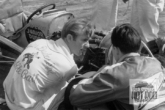

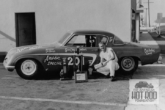
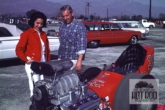



 Berardini Brothers
Berardini Brothers Jack Calori
Jack Calori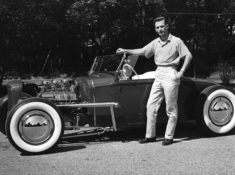 Bill Neumann
Bill Neumann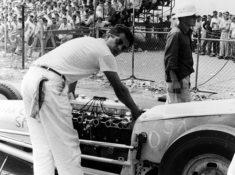 Nick Arias
Nick Arias